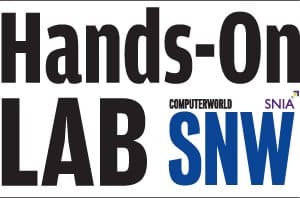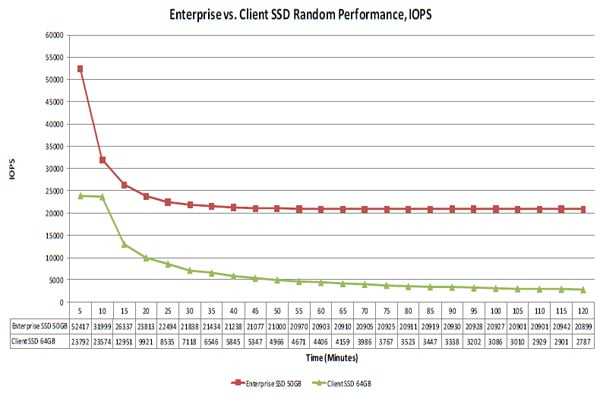 One of the interesting programs here at SNW Spring 2011 compared to other events I have attended are the Hands-On-Lab courses where users can sit down with manufacturers and dive into interesting topics. Best fitting for StorageReview, I decided to sign up for the Solid State Storage course, which included speakers from HP, Intel, Oracle, and Micron.
One of the interesting programs here at SNW Spring 2011 compared to other events I have attended are the Hands-On-Lab courses where users can sit down with manufacturers and dive into interesting topics. Best fitting for StorageReview, I decided to sign up for the Solid State Storage course, which included speakers from HP, Intel, Oracle, and Micron.
One of the interesting programs here at SNW Spring 2011 compared to other events I have attended are the Hands-On-Lab courses where users can sit down with manufacturers and dive into interesting topics. Best fitting for StorageReview, I decided to sign up for the Solid State Storage course, which included speakers from HP, Intel, Oracle, and Micron.

As we continue to cover more enterprise drives on StorageReview, one of the bigger topics is how to best compare consumer to enterprise-class SSDs. Generally speaking, with consumer activity, both drives will perform at similar levels, since this type of usage is filled with lots of idle time and burst activity. As you go into true enterprise environments, you start to see usage scenarios that have write activity that doesn’t just span a few hours, but could last days, weeks, or go on in perpetuity. For this usage profile you can’t compare drives just on burst or sustained write speeds, you need to look at the model’s “steady-state”.

The chart below best shows off the three modes a drive will transition through from a FOB or Fresh out of Box state. Each drive will start with a burst speed which is the speed generally advertised on most consumer SSDs. The downward slope from the peak speed is the drive’s sustained data transfer rate, with the much lower plateau being the model’s steady-state.
The chart illustrates the differences between the 64GB MLC-based Micron C300 and 50GB SLC-based Micron P300. The enterprise-class P300 is able to hit its steady-state level and maintain a consistent 21,000 IOPs level after 30 minutes. The consumer-grade C300 on the other hand maintains a much slower speed below 5,000 IOPs and continues to drop after even two hours. Even though the C300 as able to maintain its burst speed longer, which is what it was designed for in a consumer platform; it can’t hold up in an enterprise environment.
Overall this particular exercise helped point out one clear message… buy the right drive for your application. Micron also couldn’t help but also throw in that they not only advertise burst speeds on enterprise-class SSDs, but also include steady-state numbers so clients can make the best informed buying decision.
Stay tuned to StorageReview for updated news in the enterprise storage market!
